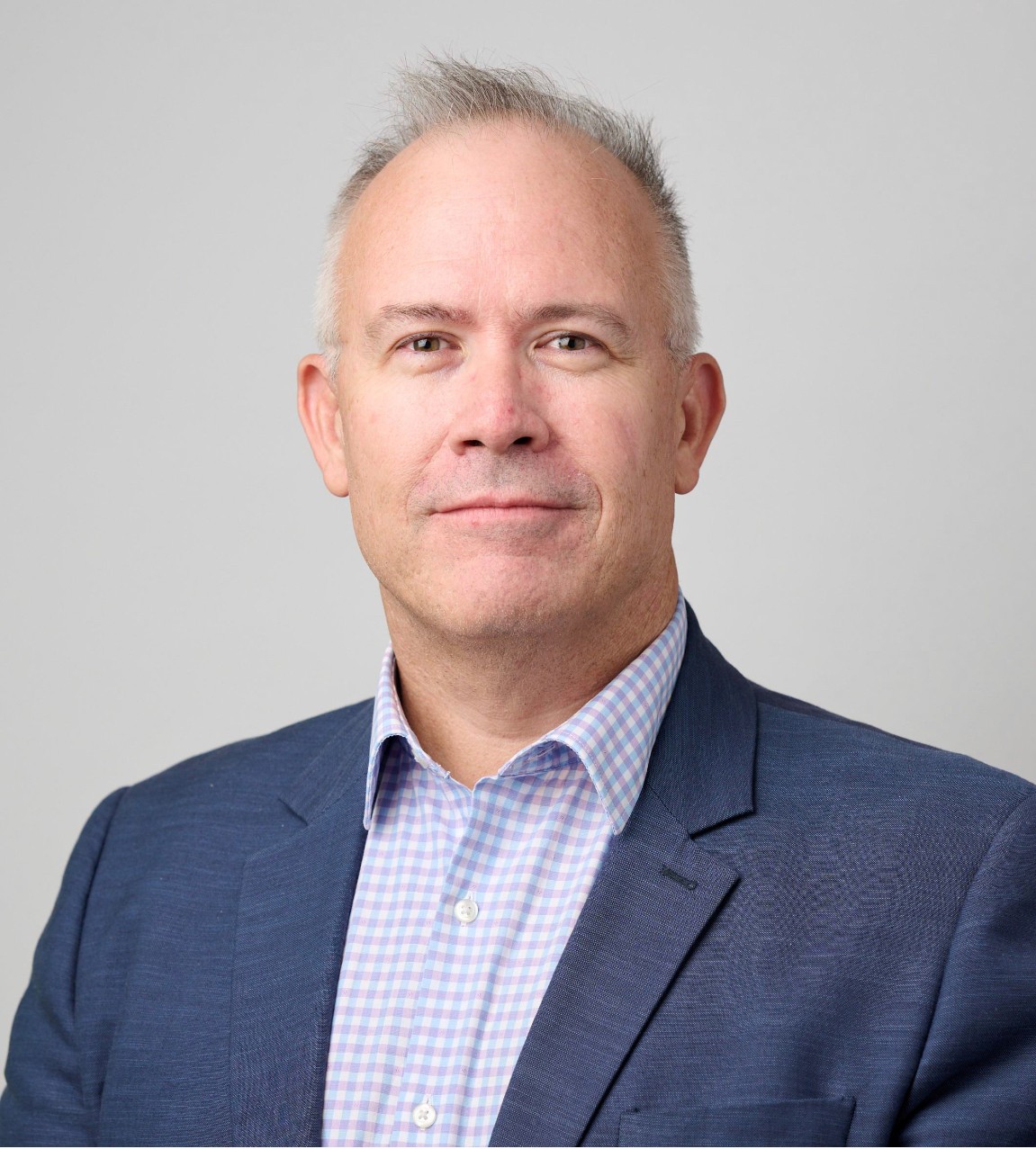
Name: Gordon Dunsford
Title: Executive General Manager Digital (Group CIO)
Company: AEMO
Commenced role: January 2022
Reporting line: Managing Director and Board
Member of the executive team: Yes
Technology Function: 500+ staff, seven direct reports
The Australian Energy Market Operator (AEMO) is at the centre of the energy markets and power grids of Australia of today, but also of the future grids and markets as the Nation transitions to Net Zero.
AEMO is a digital business that plans, builds and operates energy markets and grids entirely enabled by digital technologies.
However, AEMO had historically underinvested in its digital technology, and when it comes to the nation moving away at pace, with respect to arguably one of the most critical issues from climate change to the drive to net zero emissions, resulting in the transition from large coal fire power stations to renewables such as solar and wind.
Driven by both community demand nationally, but also government policy both at Commonwealth and State levels, as well as with market participants such as big and small Energy companies in both electricity and gas in support of the nation’s energy transition to Net Zero emissions.
“Our nation’s commitment through the Paris Agreement or COP21 is a big driver for Australia which has relatively high per capita carbon emissions due to the energy system which has been so dependent on black coal,” says Dunsford.
“Net Zero is arguably one of the most important environmental and societal challenges of our time, and especially for Australia which as a Nation has mostly depended on black coal fired power stations to provide reliable, affordable and secure power to us all for more than half a century.”
Data and automation transition
According to Dunsford, moving from dozens of these legacy generators, many that use black coal to renewables such as solar and wind is a significant challenge to manage, and one that only digital technology innovations can enable.
“The data and automation innovations needed for the energy transition to Net Zero are very significant,” he says. “In the last two years we’ve already built much of the foundational capabilities needed – and of course there’s more to come in what is now a very dynamic industry as we electrify industries and the Nation using renewables.”
One of the first major program delivered 1 October 2023 called WEM Reform is in Western Australia, which is a physically separate Energy market and grid called the Southwest Interconnect System (SWIS).
Enabling the increasing penetration of renewables, a new market was needed to create the necessary incentives for investment and automation required to manage a much more complex power system in support of the energy transition to net zero emissions.
Developed as an integrated suite of secure applications and automation for the new WEM which went live in early October 2023, including a digital Dispatch Engine to co-optimise market bids to provide energy and Essential Systems Services with power system needs and constraints, and an improved Reserve Capacity Mechanism to incentivise investment and more transparency of the market.
“The go-live went off without issue, despite the high complexity and innovations used. The risks and consequences otherwise might have seen at its worst the State of WA go black – the lights would have gone out,” says Dunsford.
The second major program is centred around gas and east coast electricity or what is generally known as the National Energy Market or NEM. The NEM is over 10 times the size of the market and power system of Western Australia, and in parallel to WEM Reform we’ve also now delivered successive major reforms to enable the energy transition to Net Zero.
This includes recently Integrated Energy Storage System (IESS) which enables Grid scale batteries to connect to the NEM, Stand-Alone Power Systems (SAPS) which enables micro-grids to participate in the NEM amongst other things, two new energy markets and a first since market start over a quarter of a century ago being FCAS (Frequency Control Ancillary Services) amongst others.
Technical complex capabilities
“We’ve also built an online portal called the Connections Simulation Tool to allow those intending to connect renewables to the grid to model how best to connect to the NEM, giving them greater certainty and speed,” says Dunford.
While these are technical complex capabilities to understand for a non-energy ‘boffin’, these are integrally critical for the transition to Net Zero and for a future grid which has increasingly a higher degree of renewables penetration nationally, a context that for other countries around the world isn’t as much as a challenge.
According to Dunsford, who joined AEMO in 2022, the organisation itself has undergone significant transformation.
“We have already launched new modern and contemporary platforms to digitise and integrate internally a number of new business systems and workflows,” he says. “Many of which previous weren’t fit-for-purpose, were manual or outdated, out of support and wouldn’t scale for the size of organisation AEMO is now which is much bigger but also responsible for many new functions nationally.”
According to Dunford there are many individual innovations at AEMO like the above, it is significant change to not just AEMO as an organisation, but more so innovations that are critical to the renewables future of our Nation’s Energy system that have now been delivered.
AEMO is a critical infrastructure operator, without AEMO the Nation potentially goes dark – the lights go out. For example, the recent CrowdStrike event would pale into insignificance, so we take Cyber Security and risk in digital technology as being critically important at the organisation.
“In an industry so interconnected at so many levels from retailers and generators, meter data providers to distribution and transmission network service providers,” says Dunsford. “Currently over 500 market participants and growing, we cannot get it wrong when it comes to cyber security and risk in digital technology.”
Title: Executive General Manager Digital (Group CIO)
Company: AEMO
Commenced role: January 2022
Reporting line: Managing Director and Board
Member of the executive team: Yes
Technology Function: 500+ staff, seven direct reports
The Australian Energy Market Operator (AEMO) is at the centre of the energy markets and power grids of Australia of today, but also of the future grids and markets as the Nation transitions to Net Zero.
AEMO is a digital business that plans, builds and operates energy markets and grids entirely enabled by digital technologies.
However, AEMO had historically underinvested in its digital technology, and when it comes to the nation moving away at pace, with respect to arguably one of the most critical issues from climate change to the drive to net zero emissions, resulting in the transition from large coal fire power stations to renewables such as solar and wind.
Driven by both community demand nationally, but also government policy both at Commonwealth and State levels, as well as with market participants such as big and small Energy companies in both electricity and gas in support of the nation’s energy transition to Net Zero emissions.
“Our nation’s commitment through the Paris Agreement or COP21 is a big driver for Australia which has relatively high per capita carbon emissions due to the energy system which has been so dependent on black coal,” says Dunsford.
“Net Zero is arguably one of the most important environmental and societal challenges of our time, and especially for Australia which as a Nation has mostly depended on black coal fired power stations to provide reliable, affordable and secure power to us all for more than half a century.”
Data and automation transition
According to Dunsford, moving from dozens of these legacy generators, many that use black coal to renewables such as solar and wind is a significant challenge to manage, and one that only digital technology innovations can enable.
“The data and automation innovations needed for the energy transition to Net Zero are very significant,” he says. “In the last two years we’ve already built much of the foundational capabilities needed – and of course there’s more to come in what is now a very dynamic industry as we electrify industries and the Nation using renewables.”
One of the first major program delivered 1 October 2023 called WEM Reform is in Western Australia, which is a physically separate Energy market and grid called the Southwest Interconnect System (SWIS).
Enabling the increasing penetration of renewables, a new market was needed to create the necessary incentives for investment and automation required to manage a much more complex power system in support of the energy transition to net zero emissions.
Developed as an integrated suite of secure applications and automation for the new WEM which went live in early October 2023, including a digital Dispatch Engine to co-optimise market bids to provide energy and Essential Systems Services with power system needs and constraints, and an improved Reserve Capacity Mechanism to incentivise investment and more transparency of the market.
“The go-live went off without issue, despite the high complexity and innovations used. The risks and consequences otherwise might have seen at its worst the State of WA go black – the lights would have gone out,” says Dunsford.
The second major program is centred around gas and east coast electricity or what is generally known as the National Energy Market or NEM. The NEM is over 10 times the size of the market and power system of Western Australia, and in parallel to WEM Reform we’ve also now delivered successive major reforms to enable the energy transition to Net Zero.
This includes recently Integrated Energy Storage System (IESS) which enables Grid scale batteries to connect to the NEM, Stand-Alone Power Systems (SAPS) which enables micro-grids to participate in the NEM amongst other things, two new energy markets and a first since market start over a quarter of a century ago being FCAS (Frequency Control Ancillary Services) amongst others.
Technical complex capabilities
“We’ve also built an online portal called the Connections Simulation Tool to allow those intending to connect renewables to the grid to model how best to connect to the NEM, giving them greater certainty and speed,” says Dunford.
While these are technical complex capabilities to understand for a non-energy ‘boffin’, these are integrally critical for the transition to Net Zero and for a future grid which has increasingly a higher degree of renewables penetration nationally, a context that for other countries around the world isn’t as much as a challenge.
According to Dunsford, who joined AEMO in 2022, the organisation itself has undergone significant transformation.
“We have already launched new modern and contemporary platforms to digitise and integrate internally a number of new business systems and workflows,” he says. “Many of which previous weren’t fit-for-purpose, were manual or outdated, out of support and wouldn’t scale for the size of organisation AEMO is now which is much bigger but also responsible for many new functions nationally.”
According to Dunford there are many individual innovations at AEMO like the above, it is significant change to not just AEMO as an organisation, but more so innovations that are critical to the renewables future of our Nation’s Energy system that have now been delivered.
AEMO is a critical infrastructure operator, without AEMO the Nation potentially goes dark – the lights go out. For example, the recent CrowdStrike event would pale into insignificance, so we take Cyber Security and risk in digital technology as being critically important at the organisation.
“In an industry so interconnected at so many levels from retailers and generators, meter data providers to distribution and transmission network service providers,” says Dunsford. “Currently over 500 market participants and growing, we cannot get it wrong when it comes to cyber security and risk in digital technology.”








